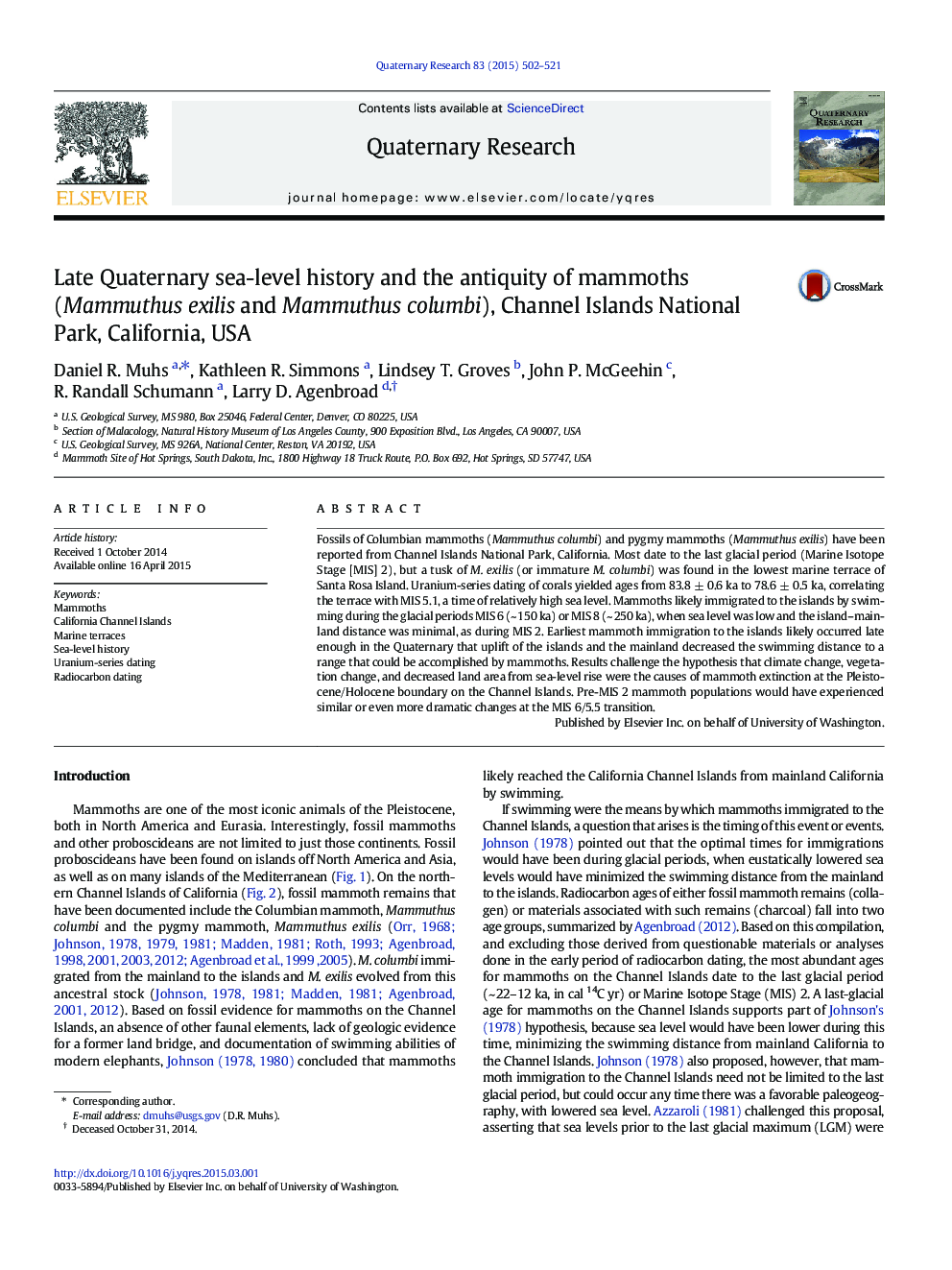| Article ID | Journal | Published Year | Pages | File Type |
|---|---|---|---|---|
| 1045213 | Quaternary Research | 2015 | 20 Pages |
Abstract
Fossils of Columbian mammoths (Mammuthus columbi) and pygmy mammoths (Mammuthus exilis) have been reported from Channel Islands National Park, California. Most date to the last glacial period (Marine Isotope Stage [MIS] 2), but a tusk of M. exilis (or immature M. columbi) was found in the lowest marine terrace of Santa Rosa Island. Uranium-series dating of corals yielded ages from 83.8 ± 0.6 ka to 78.6 ± 0.5 ka, correlating the terrace with MIS 5.1, a time of relatively high sea level. Mammoths likely immigrated to the islands by swimming during the glacial periods MIS 6 (~ 150 ka) or MIS 8 (~ 250 ka), when sea level was low and the island-mainland distance was minimal, as during MIS 2. Earliest mammoth immigration to the islands likely occurred late enough in the Quaternary that uplift of the islands and the mainland decreased the swimming distance to a range that could be accomplished by mammoths. Results challenge the hypothesis that climate change, vegetation change, and decreased land area from sea-level rise were the causes of mammoth extinction at the Pleistocene/Holocene boundary on the Channel Islands. Pre-MIS 2 mammoth populations would have experienced similar or even more dramatic changes at the MIS 6/5.5 transition.
Keywords
Related Topics
Physical Sciences and Engineering
Earth and Planetary Sciences
Geology
Authors
Daniel R. Muhs, Kathleen R. Simmons, Lindsey T. Groves, John P. McGeehin, R. Randall Schumann, Larry D. Agenbroad,
